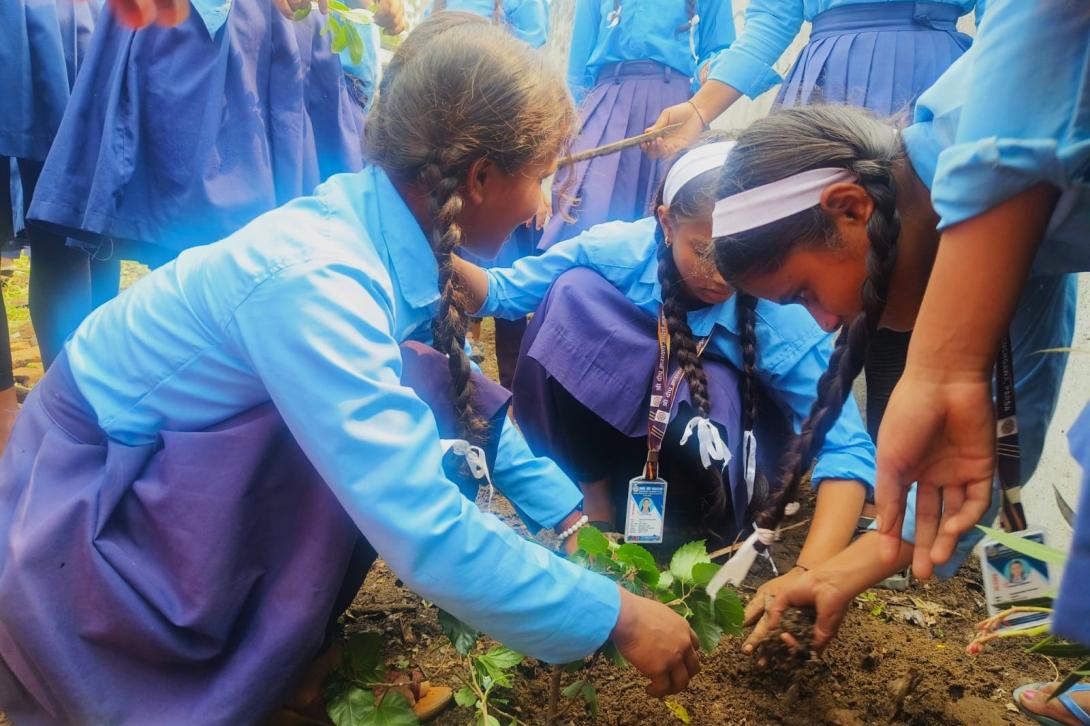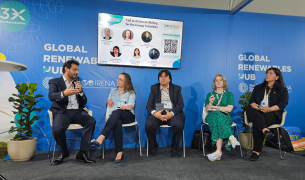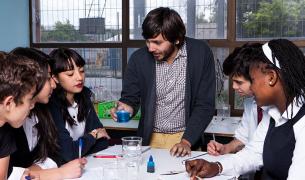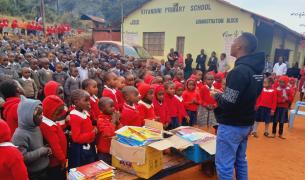From barriers to solutions: Getting teachers climate education ready

Yojana Bhusal and Rashmi Adhikari are Teach For Nepal Fellows in a rural school. They’ve witnessed how deeply climate change impacts their students in all aspects of their lives and education—through water scarcity, failing crops, extreme weather, and loss of livelihoods. Yet, they discovered that their students, like most across Nepal and the world, don’t adequately learn about climate change and environmental risks in school. This often leaves young people feeling anxious about their future and unprepared to respond or take meaningful action.
Yojana and Rashmi also noticed that many of their fellow teachers don’t feel prepared to teach students about this lived reality, despite seeing the vital importance and wanting to take action. This observation is echoed in a global survey of 58,000 teachers: 95% agreed that it’s important or very important to teach about climate change—yet less than 40% felt prepared to do so.
From our own experiences, and from working with hundreds of teachers across the global Teach For All network, we know teachers often show an emotional response to climate education, characterized by a great concern and desire to do something, mixed with feelings of imperfection (too little knowledge to confidently speak/teach about it), hypocrisy (worries that they can’t teach climate education if they if they themselves still live in unsustainable ways), and frustration due to limited time, resources, and support. There’s also a common misconception that climate education is purely theoretical or should be confined to science subjects. In line with the global survey cited above, we find most teachers feel daunted and overwhelmed by the desire to teach about climate change.
In light of the ever-growing importance of supporting students to build the knowledge, mindsets, and resilience to address realities of the climate crisis, developing teacher readiness is critical. Ultimately, teaching could become the green job on which all other future green jobs depend. That’s why we’re focusing our Earth Day 2025 campaign on advancing the climate education readiness of all teachers.
We’ve identified the 5 key barriers to teachers being climate-education-ready, and spotlight one inspiring, replicable solution to each of these barriers—developed and led by climate education champions across the global Teach For All network, like Yojana and Rashmi. Vitally, while we focus on the needs of teachers to be climate-education-ready, we don’t suggest placing all the burden on them—rather, we all have a role to play in advancing climate education in schools, starting with policies that integrate climate education into curricula.
So, what are the barriers to building teacher readiness for climate education and our global climate education champions’ solutions?
 1. Barrier: A prevalent mindset that climate education is a separate subject that competes for time and attention with core subject areas like math and reading—in other words, a belief that climate education means sacrificing learning and academic outcomes.
1. Barrier: A prevalent mindset that climate education is a separate subject that competes for time and attention with core subject areas like math and reading—in other words, a belief that climate education means sacrificing learning and academic outcomes.
Solution: Joaquin, an Enseña por Bolivia fellow, and Guilherme, an Ensina Brasil alumnus, show that climate education can be woven into every subject, not as an add-on, but as a way to strengthen relevance and meaning of learning. Their approach deepens academic content, fosters holistic student development and 21st century skills, and boosts student engagement and academic outcomes. Their experiences match those of many others in our global network.
2. Barrier: Lack of climate education training, mentorship, and suitable resources—in most cases, teachers need to build their own content knowledge and develop materials for climate change lessons.
Solution: Teach For Pakistan alumni Nouman, Abdul Malik, and Sehrish lead an organization, Climate Class Connection, that equips teachers to integrate climate topics into everyday lessons, and provides ongoing mentorship and coaching. In collaboration with local partners, including the Ministry of Federal Education, they have already trained over 3,100 teachers in Pakistan to be climate-education-ready.
3. Barrier: A lack of community spaces where teachers can discuss and reflect on their experiences with other teachers and gain peer support and inspiration leads teachers to feel alone and lonely in an uphill battle of integrating climate education
Solution: In the UK, Teach First alumnae Sophie and Emilija created the SustainEd Network as a space for Teach First Ambassadors to connect and share resources and expertise in climate and sustainability education—and to transform climate education from an isolated effort into a collective movement. Across the Teach For All network, there are similar communities, like the PACE Network in Africa and the Abya Yala Network in Latin America.
 4. Barrier: In many contexts, there is a conventional (self-)view of teachers as the all-knowing sole experts in the classroom. Given most teachers feel insufficiently knowledgeable on climate change, this perception prevents them from engaging in climate education and fostering the empowerment of their students.
4. Barrier: In many contexts, there is a conventional (self-)view of teachers as the all-knowing sole experts in the classroom. Given most teachers feel insufficiently knowledgeable on climate change, this perception prevents them from engaging in climate education and fostering the empowerment of their students.
Solution: Teach For Liberia builds on the Teaching as Collective Leadership framework and applies the Design for Change model—Feel, Imagine, Do, Share—to cultivate a mindset of Teachers as Learners and Students as Leaders. Fellows are encouraged to engage in inquiry and action on climate change alongside their students. By approaching their role as mentors and co-learners rather than sole experts, teachers empower students to lead, unlocking their collective agency for meaningful climate action.
5. Barrier: While climate change and its impacts are a lived reality for students globally, this is not reflected in how they are taught: in most cases, students learn solely theoretical, scientific concepts, rather than using their hands and hearts to make sense of and shape the world around them. Indeed, many teachers feel unprepared to teach about climate change in a way that is less disconnected from their students’ realities.
Solution: In their rural school in Nepal, Yojana and Rashmi bring climate education to life—making it relevant, and connected to their students’ everyday experiences, rather than just another lesson in a textbook. Through their school’s Eco Club, they engage students in hands-on activities like clean-up drives, planting trees, and reducing waste. By making climate education relevant and accessible, they build climate action readiness and resilience in both their students
This Earth Day, we celebrate these diverse solutions that are illustrative of so many great initiatives across our global network for building teacher readiness for climate education—together, they can unlock climate education at scale. But educators need to be supported in their efforts to foster their own and their students’ agency to address the climate crisis, and we all have a role to play.
So, here is our Earth Day prompt for you: Talk to a teacher in your community and ask them if they feel ready to engage their students in climate education—if the answer is no, ask them why and what you can do to help. We hope these conversations spark new insights and inspire further action towards building teacher readiness.



